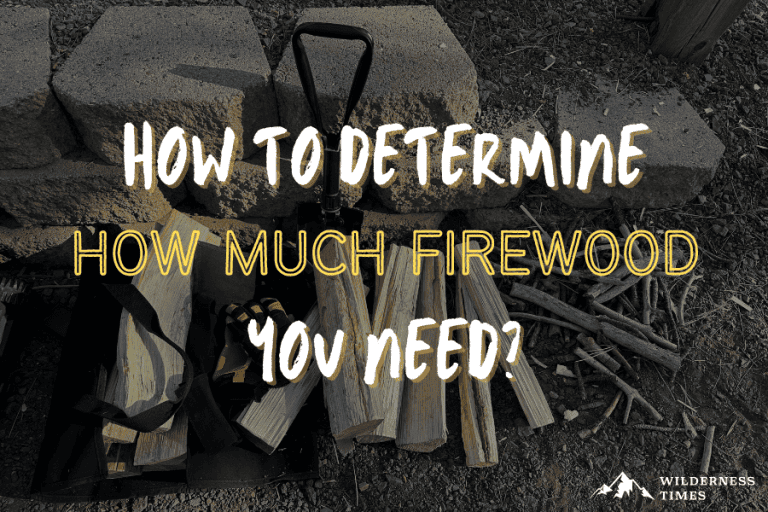It can be difficult to guess just how much firewood you’re going to need for your weekend getaway. But that’s why we’re going to help you figure out how to determine how much firewood you need while camping!
Plus, we’re adding the bonus of where to buy firewood if you can’t bring some with you.
After all, a roaring fire under the night sky after a long day on the trail is one of the best ways to wrap up your day.
Table of Contents
ToggleHow Much Firewood Do I Need For Camping?
On average, conventional wisdom says you’ll need anywhere from 2-5 bundles of firewood per day, depending on your needs and the size of your group.
A standard bundle will be made up of 7-12 individual pieces of wood.
However, your firewood needs will vary depending on the conditions you experience at the campsite.
| Campfire Time | Amount of Firewood for 1-3 people | Amount of firewood for 4+ people |
| 1 Hour | ½ bundle (4-6 logs) | 1 bundle (7-12 logs) |
| 2 Hours | 1 bundle (7-12 logs) | 2 bundles (14-24 logs) |
| 3 Hours | 1.5 bundles (18-20 logs) | 3 bundles (21-36 logs) |
| 4 Hours | 2 bundles (14-24 logs) | 4 bundles (28-48 logs) |
| 5 Hours | 2.5 bundles (20-30 logs) | 5 bundles (35-60 logs) |
| 6 Hours | 3 bundles (21-36 logs) | 6 bundles (42-72 logs) |
Knowing the needs for general seasons can be helpful in estimating how much wood you’ll need to bring on your trip.
How Much Firewood Do I Need In Cold Weather?
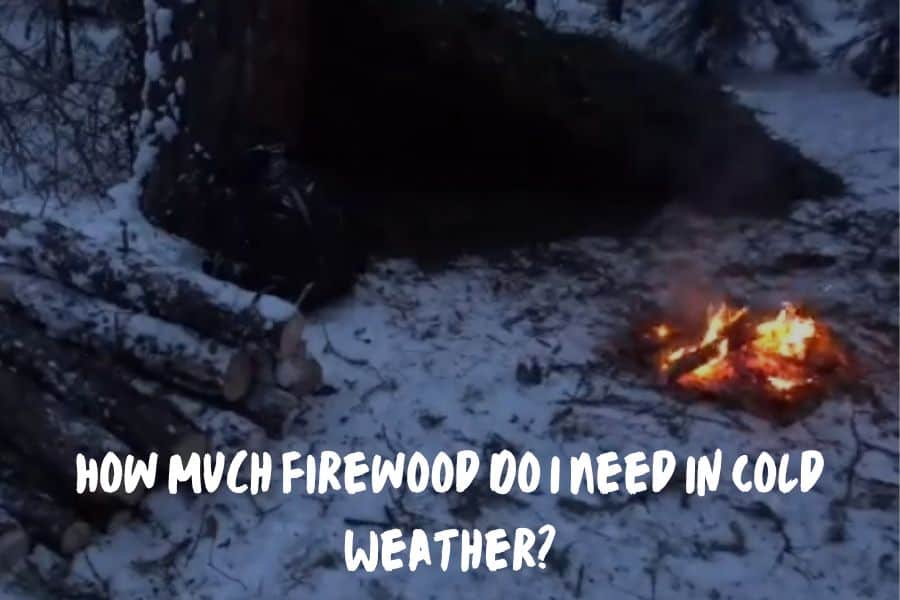
In general, you’ll need more firewood in cold weather than you will in warmer weather.
This is because the fire will require more fuel (wood) to create and sustain heat while surrounded by cold air.
In cold weather, I recommend that you bring at least another bundle or two on top of your regular firewood haul.
How Much Firewood Do I Need In Warm Weather?

In warm weather, you won’t have to worry so much about working against the elements when building your fire.
Therefore, you can depend on bringing the regular amount of firewood we’ve listed above, and in the table we show later.
Types Of Wood & Their Burn Times
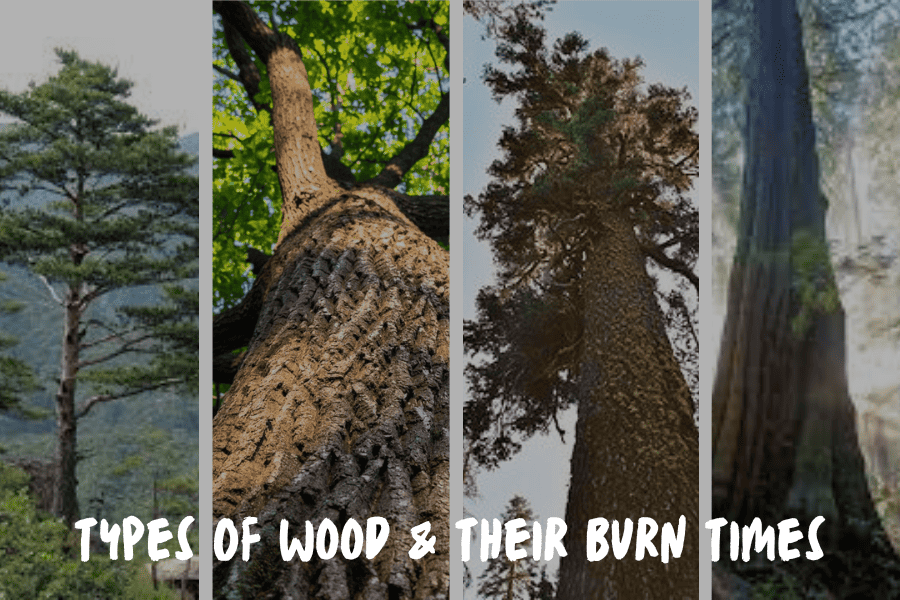
Knowing what types of wood to burn when can be a great help in building and maintaining your campfire – and knowing how much wood to bring.
Soft wood – like cedar, fir, or spruce – burns easily and quickly.
These are great varieties to use when starting up your campfire and initially building your flame.
Once you have your fire going, it’s time to add hardwood varieties – like oak, hickory, or pine.
These will burn slowly and build great embers for maintaining your campfire or cooking.
For recreational fires, I recommend placing a few hardwood logs in the middle of your fire to maintain the flame. Then, build up the flame with soft wood varieties.
When buying firewood, you’re usually going to find majority hardwood varieties in the bundle.
This is because these pieces of wood are more difficult to find and cut to the correct size when you’re in the woods.
You’ll likely still need to collect smaller softwood pieces from the area around you or bring your own firestarter to get your fire started on-site.
How To Calculate Your Firewood Needs
In addition to keeping the weather in mind, there are also different reasons to use firewood at the campsite.
In this section, we’ll go over the estimated firewood amount you’ll need for each purpose.
Recreational & Cooking Campfires

Fires for recreation and cooking meals will require the most amount of firewood.
Both types of fires will require you to build up a large fire.
Of the two, recreational fires use the most firewood.
They involve building a fire, then using more firewood to maintain the large flame until you turn in for bed.
In comparison, cooking fires are built by building up a large fire, then letting it fall into hot embers, which you then use for cooking.
Therefore, cooking fires will take slightly less firewood because you only need it for building the fire up initially.
In both cases, I recommend using soft wood to start the fires, then laying down hardwood at the base of the fire to maintain the flame over a long period of time.
From there, you can continue laying softwood on top to build up the flame when needed.
Warmth

Building a fire to keep you warm can take a good portion of wood because it will be burning in a colder environment – and throughout the night.
Fires for warmth don’t need to be quite as large as those for recreational or cooking campfires.
They generally burn for longer – especially if you’re in a survival scenario.
When building for warmth, I recommend using hardwood to sustain the fire since it will keep it burning for longer with less wood consumption.
Animal Intrigue
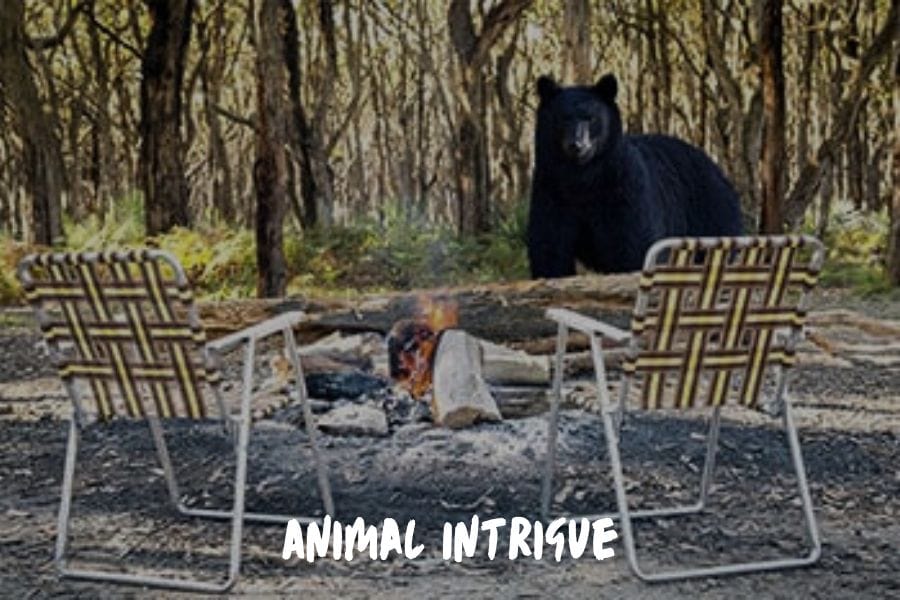
If you’re in an area that has dangerous animals that could get curious, you can keep a low fire burning during the night to ward them away.
For this specific purpose, the fire doesn’t need to be especially large, but should be visible from far away.
Here again, hardwood is going to be your best option for sustaining the low fire while also conserving wood.
You won’t need as much wood for this purpose as you will for recreation or warmth.
Factors Influencing Firewood Consumption
Duration Of Your Camping Trip

While it seems pretty straightforward, it’s always worth mentioning: the longer you’re camping, the more firewood you’ll use.
This is especially true if you’re creating a fire every night for cooking purposes.
If you’re worried about lugging firewood on your trek or won’t be able to gather any, I recommend bringing a stove and liquid fuel.
If you bring your own stove, you won’t have to rely on finding wood to make dinner every night and can save wood for recreational fires.
Weather & Climate Conditions

Fires burn the best in dry, moderate weather and climates.
If you’re camping in any other type of weather or climate, you may find that your firewood needs will vary.
Colder climates will require more firewood, while drier climates will require less. Additionally, wet climates can be challenging for fires since moisture prevents flames.
When you encounter wet wood, sometimes it requires you to use more wood because you need to create a fire to dry out the remainder of your wood.
When I do this, I use the driest pieces of wood to create a fire, then stack up my more waterlogged firewood to the side of the fire to steam and dry out.
Cooking Requirements

Setting up a fire for cooking can take a good portion of firewood.
This is because cooking requires embers, NOT open flame.
Cooking on an open flame can over-smoke your food and cook it unevenly.
However, to create embers, you’ll need to build up the fire, then let it die down to create embers big and calm enough to cook on top of.
This will require you to use some soft and hard wood to get the fire going.
Then you can let the hardwood maintain the embers to create your cooking environment.
The good news with building cooking fires is that the hardwood does a lot of work to maintain embers.
So, you won’t need to continuously pile on wood to maintain a large flame.
Campfire Activities
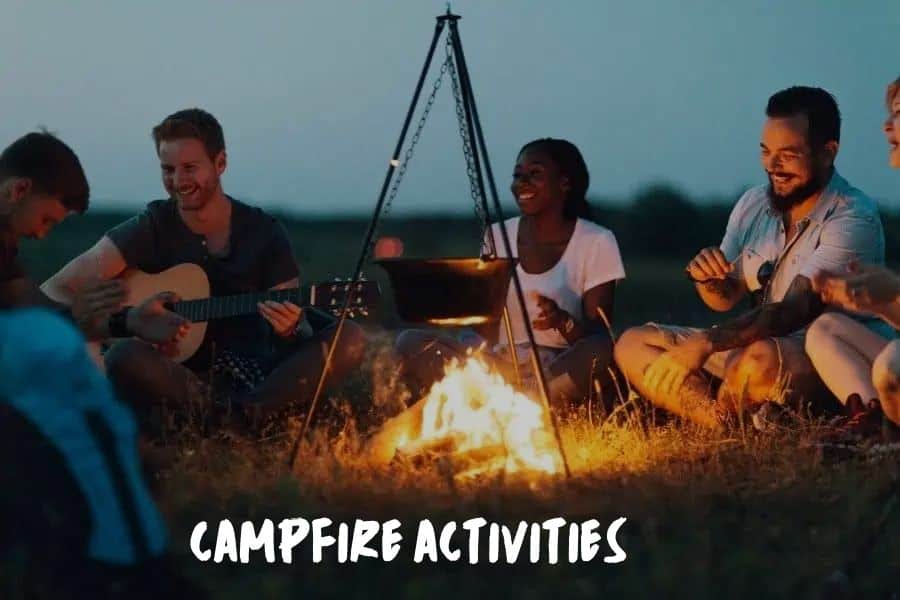
When I create a fire for campfire activities, my goal is to have a fire with a large flame for roasting marshmallows, making smores, or staying warm while we share ghost stories.
However, this type of fire takes the most amount of work and firewood.
Because you’re continuously feeding this kind of fire, you’ll need to make sure you have a large portion of wood ready to go.
How Long Firewood Burns
As we learned above, there are a ton of factors that determine how long firewood will burn at your campsite.
However, the table below describes the average estimated length of various bundle sizes.
These numbers are estimated based on fires of moderate size in a temperate climate.
If you’re planning on creating a bonfire or camping in a colder environment, you should up the amount of wood you’re bringing by at least two bundles.
| Campfire Time | Amount of Firewood for 1-3 people | Amount of firewood for 4+ people |
| 1 Hour | ½ bundle (4-6 logs) | 1 bundle (7-12 logs) |
| 2 Hours | 1 bundle (7-12 logs) | 2 bundles (14-24 logs) |
| 3 Hours | 1.5 bundles (18-20 logs) | 3 bundles (21-36 logs) |
| 4 Hours | 2 bundles (14-24 logs) | 4 bundles (28-48 logs) |
| 5 Hours | 2.5 bundles (20-30 logs) | 5 bundles (35-60 logs) |
| 6 Hours | 3 bundles (21-36 logs) | 6 bundles (42-72 logs) |
Where To Get Firewood For A Camping Trip
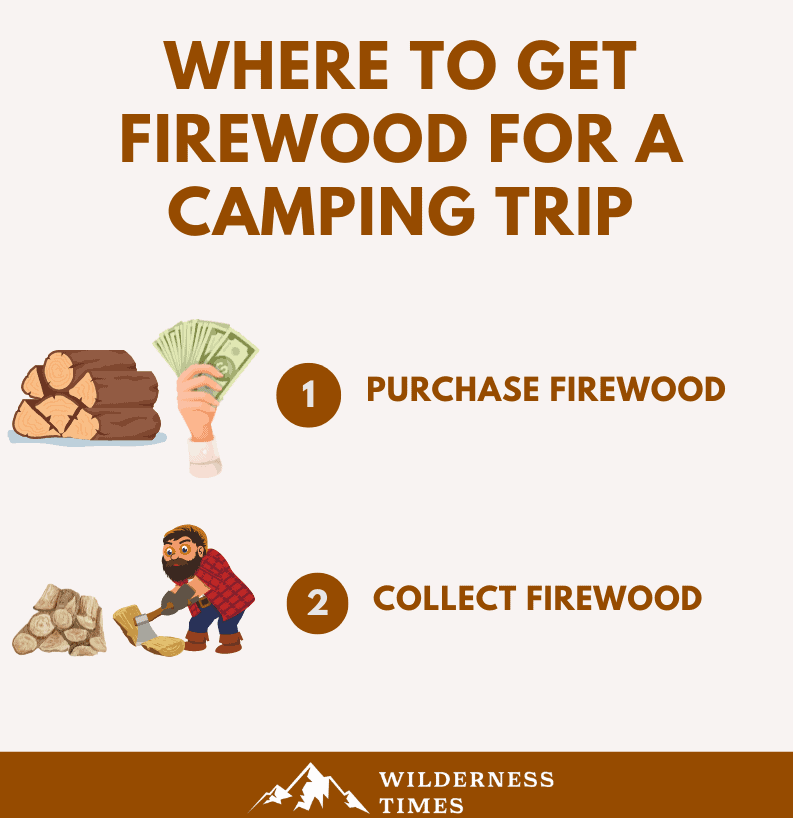
There are two main ways to gather firewood for your next camping trip.
The method you choose will depend on your overall needs and the distance you’re traveling.
Option 1: Purchase Firewood
If you’re car camping with plans of making fires every night, I recommend purchasing firewood for your campout.
Most car camping sites will have a small store where you can buy bundles of firewood.
You can also try purchasing firewood at your local hardwood store.
These bundles will generally come at a cheaper overall price than the bundles at the campsite.
However, if you’re buying firewood somewhere different than the campsite, make sure the firewood is from no more than 20 miles away.
Using wood from other areas can spread invasive species, and damage the surrounding environment.
Option 2: Collect Firewood
If you’re headed out on a longer trek or you don’t want to carry firewood with you, you can collect firewood from the area around your campsite instead!
However, there are a few precautions around this that you should know before setting out.
Make sure fires are allowed in the camping area.
Fire rules and regulations can change based on the area, season, and climate of a location.
For example, if the camping area has been experiencing a drought, the fire risk might be high.
There will likely be regulations prohibiting fires.
Additionally, if an area experiences a high concentration of hikers or campers, the local regulations may limit the use of fire.
This would help reduce any potential effects on the surrounding environment.
Collect your firewood sustainably.
The firewood collecting rules from Leave No Trace (LNT) guidelines include collecting wood that’s dead, down, dinky, and distant.
This means limiting wood collection to dead trees and branches that have already fallen down.
If you must use live wood, make sure that it’s “dinky”, or that the circumference of the trunks is smaller than your wrist.
Finally, when collecting wood try to gather it from further away from your campsite.
This will ensure that the wood is distributed over a larger area, rather than concentrated around the campsite.
FAQs
Can I Bring My Own Firewood When Camping?
Yes! You can usually purchase your own firewood at your local hardware store.
However, when you buy firewood make sure that you’re only buying firewood from a circumference of around 20 miles from the campsite.
Otherwise, you’re risking potentially lugging invasive species to the campsite.
What If I Run Out Of Firewood While Camping?
If you’re in a wooded area that allows for wood gathering, you can gather more from the area around your campsite.
However, if you’re in an area that does not allow for wood collection, or doesn’t have enough usable wood, you should use your stove to cook your food.
Are There Rules About Collecting Firewood At Campsites?
Yes! According to Leave No Trace (LNT) guidelines, it’s best to collect firewood that follows the 4 Ds: dead, down, dinky, and distant.
However, before you get to your campsite, make sure to check local regulations to ensure building a fire is allowed at your campsite.
What Are Some Alternatives To Using Firewood for Cooking & Heating?
Absolutely! If you don’t want to worry about carrying or collecting wood at the campsite, you can always bring your stove on your campout to cook your food.
If you’re looking for a way to keep yourself warm on a car camping trip without using a fire, you can use fuel-based heating appliances, like the Mr. Heater Portable Buddy Heater.
These heating options can be heavy in weight and more expensive, but can be worth it depending on your needs.
For more ideas on how to stay warm without a fire, check out this article on ways to keep your tent warm in cold weather campouts.
Many of the techniques mentioned in this article can be used to keep you warm throughout your campout!
How Should I Store My Firewood At The Campsite?
When it comes to firewood, your main priority should be keeping it dry!
If rain is in the forecast, you’ll need to find some way to keep it dry and off of wet ground.
If you’re car camping, you can throw your firewood in the covered trunk.
However, if you’re out on a longer trek, you can wrap the wood in tarp and place it under a covered area, like under a tree.
When using this technique, make sure that there is tarp underneath the wood pile as well as above it!
This will protect your wood pile from any groundwater runoff that can make your firewood too damp to use.
Final Thoughts On How Much Firewood You Need For Camping
While it can sometimes be tricky to figure out exactly how much firewood you need for your campout, it’s always worth it once the fire is roaring!
I hope this article will help you in calculating your firewood needs for your next adventure!
More on Campfires:


